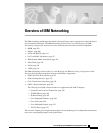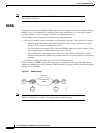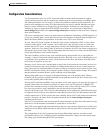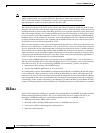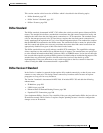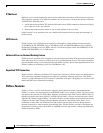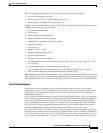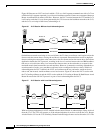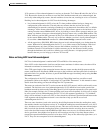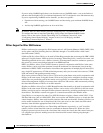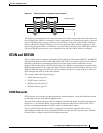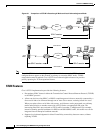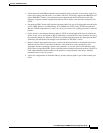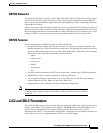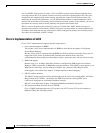
Overview of IBM Networking
DLSw+
BC-207
Cisco IOS Bridging and IBM Networking Configuration Guide
This section contains a brief overview of DLSw+ which is described in the following topics:
• DLSw Standard, page 207
• DLSw Version 2 Standard, page 207
• DLSw+ Features, page 208
DLSw Standard
The DLSw standard, documented in RFC 1795, defines the switch-to-switch protocol between DLSw
routers. The standard also defines a mechanism to terminate data-link control connections locally and
multiplex the traffic from the data-link control connections to a TCP connection. The standard always
calls for the transport protocol to be TCP and always requires that data-link control connections be
locally terminated (the equivalent of Cisco’s local acknowledgment option). The standard also requires
that the SRB RIF be terminated at the DLSw router. The standard describes a means for prioritization
and flow control and defines error recovery procedures that ensure data-link control connections are
appropriately disabled if any part of their associated circuits breaks.
The DLSw standard does not specify when to establish TCP connections. The capabilities exchange
allows compliance to the standard, but at different levels of support. The standard does not specify how
to cache learned information about MAC addresses, RIFs, or NetBIOS names. It also does not describe
how to track either capable or preferred DLSw partners for either backup or load-balancing purposes.The
standard does not provide the specifics of media conversion, but leaves the details up to the
implementation. It does not define how to map switch congestion to the flow control for data-link
control. Finally, the MIB is documented under a separate RFC.
DLSw Version 2 Standard
In the Version 1 standard, a network design requires fully meshed connectivity so that all peers were
connect to every other peer. This design creates unnecessary broadcast traffic because an explorer
propagates to every peer for every broadcast.
The Version 2 standard is documented in RFC 2166. It includes RFC 1795 and adds the following
enhancements:
• IP Multicast, page 208
• UDP Unicast, page 208
• Enhanced Peer-on-Demand Routing Feature, page 208
• Expedited TCP Connection, page 208
Users implement DLSw+ Version 2 for scalability if they are using multivendor DLSw devices with an
IP multicast network. DLSw Version 2 requires complex planning because it involves configuration
changes across an IP network.



